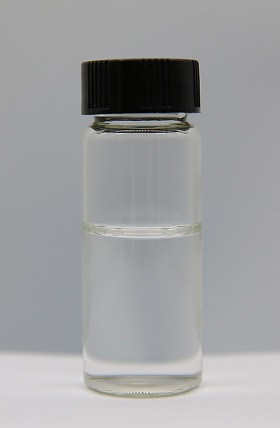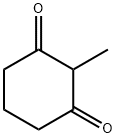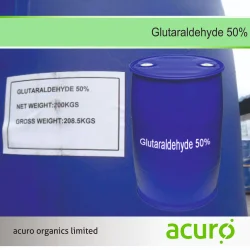Glutaraldehyde
Synonym(s):Glutaraldehyde solution;Glutaric dialdehyde solution;Pentane-1,5-dial;Pentanedial
- CAS NO.:111-30-8
- Empirical Formula: C5H8O2
- Molecular Weight: 100.12
- MDL number: MFCD00007025
- EINECS: 203-856-5
- SAFETY DATA SHEET (SDS)
- Update Date: 2025-12-17 09:49:40

What is Glutaraldehyde?
Description
Glutaraldehyde is a well-known sensitizer among cleaners and health workers. It is also found in X-ray developers products.
Description
Glutaraldehyde is a dialdehyde and a reduced form of the corresponding diacid, glutaric acid. It was mentioned (as “trimethylene aldehyde”) in the chemical literature as early as 1908, when Russian chemists N. J. Demjanow* and K. Fortunatow synthesized it via the chromic oxide oxidation of 1,5-pentanediol (“trimethylene carbinol”).
Other ways to prepare glutaraldehyde include acidification of 2-methoxy- or 2-ethoxy-3,4-dihydro-2H-pyran and tungstic acid–catalyzed hydrogen peroxide oxidation of cyclopentene.
Because of its highly reactive aldehyde groups, glutaraldehyde is too unstable to store in its pure form. The article of commerce is usually a 25% or 50% aqueous solution; but it is also sold in methanol solution. As the hazard information table shows, it is toxic and must be handled carefully.
Glutaraldehyde’s many uses include sterilizing medical equipment, tanning leather, cross-linking polymers, and acting as a fixative in biochemical procedures. It?has even been tried as an ingredient in hair treatments, such as “permanent” waves.
Additional information about glutaraldehyde applications can be found on the ScienceDirect information page.
Chemical properties
Glutaraldehyde is a colorless liquid with a pungent odor, which readily changes to a glossy polymer. The Odor Threshold is 0.04 ppm (NY) and 0.2 ppm (NJ). It is miscible in water and organic solvents. Glutaraldehyde may be incompatible with strong oxidizers and strong bases. It should be noted that alkaline solutions containing glutaraldehyde may react with alcohol, ketones, amines, hydrazines, and proteins.

The Uses of Glutaraldehyde
Glutaraldehyde is used as a cold sterilizingdisinfectant, as fixatives for tissues, in tanning,and in cross-linking proteins.
The Uses of Glutaraldehyde
Glutaraldehyde (Symbol GTA; glutaric dialdehyde, 1,5-pentanedial, glutaral) is commonly used in the medical industry in cold sterilization and in the X-ray development process. It can also be encountered in the leather industry as a tanning ingredient and in mortuary workers. There are no reports which indicate that glutaraldehyde is a naturally occurring compound. Cidex and Acusol, 2% buffered solutions, use this aldehyde as an active ingredient. Sodium bicarbonate is required to activate the solution, which then has a shelf life of 1–2 weeks. Despite health hazards involved with its use, glutaraldehyde is one of the most effective biocides used. It is particularly effective against bacteria and viruses, including the human immunodeficiency virus.
The Uses of Glutaraldehyde
Glutaraldehyde is used to disinfect medical and dental equipment. Glutaraldehyde is also used for industrial water treatment and as a preservative.
The Uses of Glutaraldehyde
glutaral (glutardialdehyde) is a broad-spectrum preservative that can cause skin irritation. This is an amino acid occurring in green sugar beets.
What are the applications of Application
Glutaraldehyde solution, 25% w/w is a protein cross-linking agent
What are the applications of Application
Glutaraldehyde solution, 50% w/w is an amine-reactive homobifunctional crosslinker
What are the applications of Application
Glutaraldehyde solution, 70% w/w is A homobifunctional crosslinker suitable as a fixative for electron microscopy
Definition
ChEBI: A dialdehyde comprised of pentane with aldehyde functions at C-1 and C-5.
Synthesis Reference(s)
Tetrahedron, 48, p. 3503, 1992 DOI: 10.1016/S0040-4020(01)88489-1
General Description
Light yellow liquid. Mixes with water.
Air & Water Reactions
Polymerizes in the presence of water.
Reactivity Profile
GLUTARALDEHYDE may discolor on exposure to air. Pentanedial polymerizes on heating. Pentanedial is incompatible with strong oxidizing agents. Pentanedial polymerizes in the presence of water.
Health Hazard
Glutaraldehyde is a strong irritant to the nose,eyes, and skin. In rabbits, 250 μg and 500 mg in 24 hours produced severe irritation in theeyes and skin, respectively. The corrosiveeffect on human skin of 6 mg over 3 dayswas severe. However, the acute toxicity ofglutaraldehyde by the oral and dermal routesis low to mild. Ohsumi and Kuroki (1988)determined that the symptoms of acute toxicityof this compound were less severethan those of formaldehyde. But the restraintof growth was more pronounced in micetreated with glutaraldehyde. An oral LD50value of 1300 mg/kg was reported for mice.Inhalation of this compound can cause upperrespiratory tract irritation, headache, and nervousness.Mice exposed at 33 ppm showedsymptoms of hepatitis.
Fire Hazard
Literature sources indicate that Pentanedial is nonflammable.
Flammability and Explosibility
Non flammable
Contact allergens
Glutaraldehyde is a well-know sensitizer in cleaners and health workers. It can also be found in X-ray developers or in cosmetics.
Biochem/physiol Actions
Glutaraldehyde is an effective protein crosslinker and finds application in techniques like enzyme immobilisation microscopy, histochemistry and cytochemistry. It exists in different forms under acidic or neutral conditions. It is a biocide widely used as a disinfectant in hospitals and industries and is toxic to aquatic organisms. Its allergic nature leads to hypersensitivity reactions. Contact of glutaraldehyde vapors in endoscopy contributes to Colitis.
Safety Profile
Poison by ingestion, intravenous, and intraperitoneal routes. Moderately toxic by inhalation, skin contact, and subcutaneous routes. Experimental teratogenic and reproductive effects. A severe eye and human skin irritant. Mutation data reported. When heated to decomp osition it emits acrid smoke and irritating fumes. See also ALDEHYDES.
Potential Exposure
Glutaraldehyde is used in leather tanning; in embalming fluids; as a germicide; as a cross-linking agent for protein and polyhydroxy materi als; as a fixative for tissues; and as an intermediate. Buffered solutions are used as antimicrobial agents in hospitals.
Shipping
UN2810 Toxic liquids, organic, n.o.s., Hazard Class: 6.1; Labels: 6.1-Poisonous materials, Technical Name Required.
Purification Methods
Likely impurities are oxidation products-acids, semialdehydes and polymers. It can be purified by repeated washing with activated charcoal (Norit) followed by vacuum filtration, using 15-20g charcoal/100mL of glutaraldehyde solution. Distil it at 60-65o/15mm, discarding the first 5-10%, then dilute with an equal volume of freshly distilled water at 70-75o, using magnetic stirring under nitrogen. The solution is stored at low temperature (3-4o), in a tightly stoppered container, and protected from light. Standardise by titration with hydroxylamine. [Anderson J Histochem Cytochem 15 652 1967, Beilstein 1 IV 3659.]
Incompatibilities
Water contact forms a polymer solution. A strong reducing agent. Incompatible with strong acids; caustics, ammonia, amines, and strong oxidizers. Note: Alkaline solutions of glutaraldehyde (i.e., activated glutar aldehyde) react with alcohol, ketones, amines, hydrazines, and proteins.
Waste Disposal
Dissolve or mix the material with a combustible solvent and burn in a chemical incinera tor equipped with an afterburner and scrubber. All federal, state, and local environmental regulations must be observed.
Properties of Glutaraldehyde
| Melting point: | -15 °C |
| Boiling point: | 100 °C |
| Density | 1.058 g/mL at 20 °C |
| vapor density | 1.05 (vs air) |
| vapor pressure | 15 mmHg ( 20 °C) |
| refractive index | n |
| Flash point: | 100°C |
| storage temp. | Store below +30°C. |
| solubility | miscible |
| solubility | Chloroform (Slightly), DMSO (Slightly), Ethyl Acetate (Slightly), Methanol (Slightly) |
| appearance | colorless to light yellow viscous liquid |
| form | Solution |
| color | Clear to slight haze |
| Specific Gravity | 1.06 |
| PH | >3.0 (H2O, 20°C) |
| Odor | pungent aldehyde odor |
| Water Solubility | miscible |
| Merck | 14,4472 |
| BRN | 605390 |
| Exposure limits | Ceiling (ACGIH) 0.8 mg/m3 (0.2 ppm). |
| Stability: | Light Sensitive |
| CAS DataBase Reference | 111-30-8(CAS DataBase Reference) |
| NIST Chemistry Reference | Glutaral(111-30-8) |
| EPA Substance Registry System | Glutaraldehyde (111-30-8) |
Safety information for Glutaraldehyde
| Signal word | Danger |
| Pictogram(s) |
 Corrosion Corrosives GHS05  Skull and Crossbones Acute Toxicity GHS06  Health Hazard GHS08  Environment GHS09 |
| GHS Hazard Statements |
H312:Acute toxicity,dermal H314:Skin corrosion/irritation H317:Sensitisation, Skin H334:Sensitisation, respiratory H335:Specific target organ toxicity, single exposure;Respiratory tract irritation H411:Hazardous to the aquatic environment, long-term hazard |
| Precautionary Statement Codes |
P261:Avoid breathing dust/fume/gas/mist/vapours/spray. P273:Avoid release to the environment. P280:Wear protective gloves/protective clothing/eye protection/face protection. P303+P361+P353:IF ON SKIN (or hair): Remove/Take off Immediately all contaminated clothing. Rinse SKIN with water/shower. P305+P351+P338:IF IN EYES: Rinse cautiously with water for several minutes. Remove contact lenses, if present and easy to do. Continuerinsing. |
Computed Descriptors for Glutaraldehyde
| InChIKey | SXRSQZLOMIGNAQ-UHFFFAOYSA-N |
Glutaraldehyde manufacturer
JSK Chemicals
Shiv Shakti Trading Corporation
New Products
4,4-Difluoropiperidine hydrochloride tert-butyl 9-methoxy-3-azaspiro[5.5]undecane-3-carboxylate Indole Methyl Resin N-Isopropylurea N,N-Dicyclohexylcarbodiimide(DCC) MELDRUMS ACID 5-METHYLISOXAZOLE-4-CARBOXYLIC ACID Magnessium Bis glycinate Zinc ascorbate 1-bromo-2-butyne 2-acetamidophenol 9(10H)-anthracenone Erythrosin B, 4-Piperidinopiperidine 2-((4-morpholinophenylamino) (methylthio) methylene) malononitrile 2,4-dihydroxybenzaldehyde 3-(4-morpholinophenylamino)-5-amino-1H-pyrazole-4-carbonitrile Methyl 2-methylquinoline-6-carboxylate 2,6-dichloro-4-nitropyridine 4-Bromo-2-chlorobenzonitrile 2-(benzylamino)acetic acid hydrochloride 4-(tert-Butoxycarbonylamino)but- 2-ynoic acid 3,4-dihydro-2H-benzo[b][1,4]dioxepine 1-Phenyl-1-cycloprppanecarboxylicacidRelated products of tetrahydrofuran








You may like
-
 GLUTARALDEHYDE 50% 99%View Details
GLUTARALDEHYDE 50% 99%View Details -
 Glutaraldehyde CASView Details
Glutaraldehyde CASView Details -
 Glutaric dialdehyde CAS 111-30-8View Details
Glutaric dialdehyde CAS 111-30-8View Details
111-30-8 -
 Glutaraldehyde CASView Details
Glutaraldehyde CASView Details -
 Glutaric Aldehyde Liquid, For Disinfection, 111-30-8View Details
Glutaric Aldehyde Liquid, For Disinfection, 111-30-8View Details
111-30-8 -
 Glutaraldehyde 50% (Glutaric aldehyde)View Details
Glutaraldehyde 50% (Glutaric aldehyde)View Details
111-30-8 -
 Glutaraldehyde,C5H8O2,CAS 111-30-8, 50%, For Mud ChemicalsView Details
Glutaraldehyde,C5H8O2,CAS 111-30-8, 50%, For Mud ChemicalsView Details
111-30-8 -
 Glutaraldehyde 50%, Grade: Commercial, Packaging Size: 25 kgView Details
Glutaraldehyde 50%, Grade: Commercial, Packaging Size: 25 kgView Details
111-30-8
